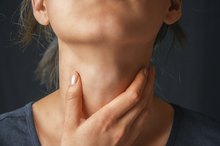What does fact checked mean?
At Healthfully, we strive to deliver objective content that is accurate and up-to-date. Our team periodically reviews articles in order to ensure content quality. The sources cited below consist of evidence from peer-reviewed journals, prominent medical organizations, academic associations, and government data.
The information contained on this site is for informational purposes only, and should not be used as a substitute for the advice of a professional health care provider. Please check with the appropriate physician regarding health questions and concerns. Although we strive to deliver accurate and up-to-date information, no guarantee to that effect is made.
Herpangina in Adults
Herpangina is a viral infection that causes sores or lesions in your mouth 1. Although most common in children ages 3 to 10, the virus has the potential to affect people of any age, according to the U.S. National Library of Medicine 2.
If you are experiencing serious medical symptoms, seek emergency treatment immediately.
Causes
Herpangina is spread through saliva via mouth-to-mouth contact or coming in contact with the stools of an infected person due to poor hygiene 1.
Time Frame
First Outbreak Symptoms of Mouth Herpes
Learn More
Symptoms of herpangina usually develop within three to six days after exposure, reports Dr. Vinay Reddy of New York 1.
Symptoms
Symptoms of herpangina in adults include fever, headache, loss of appetite, sore throat and painful swallowing 1. The sores caused by the virus are white or gray with a red border and are painful.
Treatment
How to Diagnose Fifth Disease Vs. Hand, Foot and Mouth Disease
Learn More
Herpangina usually clears up on its own within a few weeks, but treatment for symptoms is often given to make patients more comfortable, reports the U.S. National Library of Medicine 12. Oral medications, like over-the-counter acetaminophen or ibuprofen, or topical treatments, like benzocaine, reduce pain, and cold milk and ice cream also provide some relief.
Considerations
Herpangina is similar to another viral infection called hand, foot and mouth disease 1. The main symptomatic difference between the two conditions is that hand, foot and mouth disease usually causes a skin rash on your hands, feet and rear.
Related Articles
References
- U.S. National Library of Medicine: Herpangina
- Yao X, Bian LL, Lu WW, et al. Epidemiological and etiological characteristics of herpangina and hand foot mouth diseases in Jiangsu, China, 2013-2014. Hum Vaccin Immunother. 2017;13(4):823-830. doi:10.1080/21645515.2016.1236879
- Repass GL, Palmer WC, Stancampiano FF. Hand, foot, and mouth disease: identifying and managing an acute viral syndrome. Cleve Clin J Med. 2014;81(9):537-543. doi:10.3949/ccjm.81a.13132
- Pillai AS, Medina D. Rash in an Eight-Year-Old Boy. Am Fam Physician. 2012;86(12):1141-1142.
- EnteroVirus Foundation. Enterovirus Infection: The Symptoms & Signs.
- Scully C, Shotts R. Mouth ulcers and other causes of orofacial soreness and pain. West J Med. 2001;174(6):421-424.
- Zaoutis T, Klein JD. Enterovirus Infections. Pediatrics in Review. 1998;19(6):183-191.
- Abzug, MJ. (2016). Nelson Textbook of Pediatrics. 20th ed. Elsevier. 1561-1568e1.
- Fort, GG. (2017). Ferri's Clinical Advisor 2017: Herpangina. Elsevier. 583.
Writer Bio
Faith Davies has been writing professionally since 1996, contributing to various websites. She holds an LAH insurance license in the state of Pennsylvania and has experience as a bank branch manager and lending officer. Davies graduated cum laude from the University of Pittsburgh with a Bachelor of Arts in art history.









